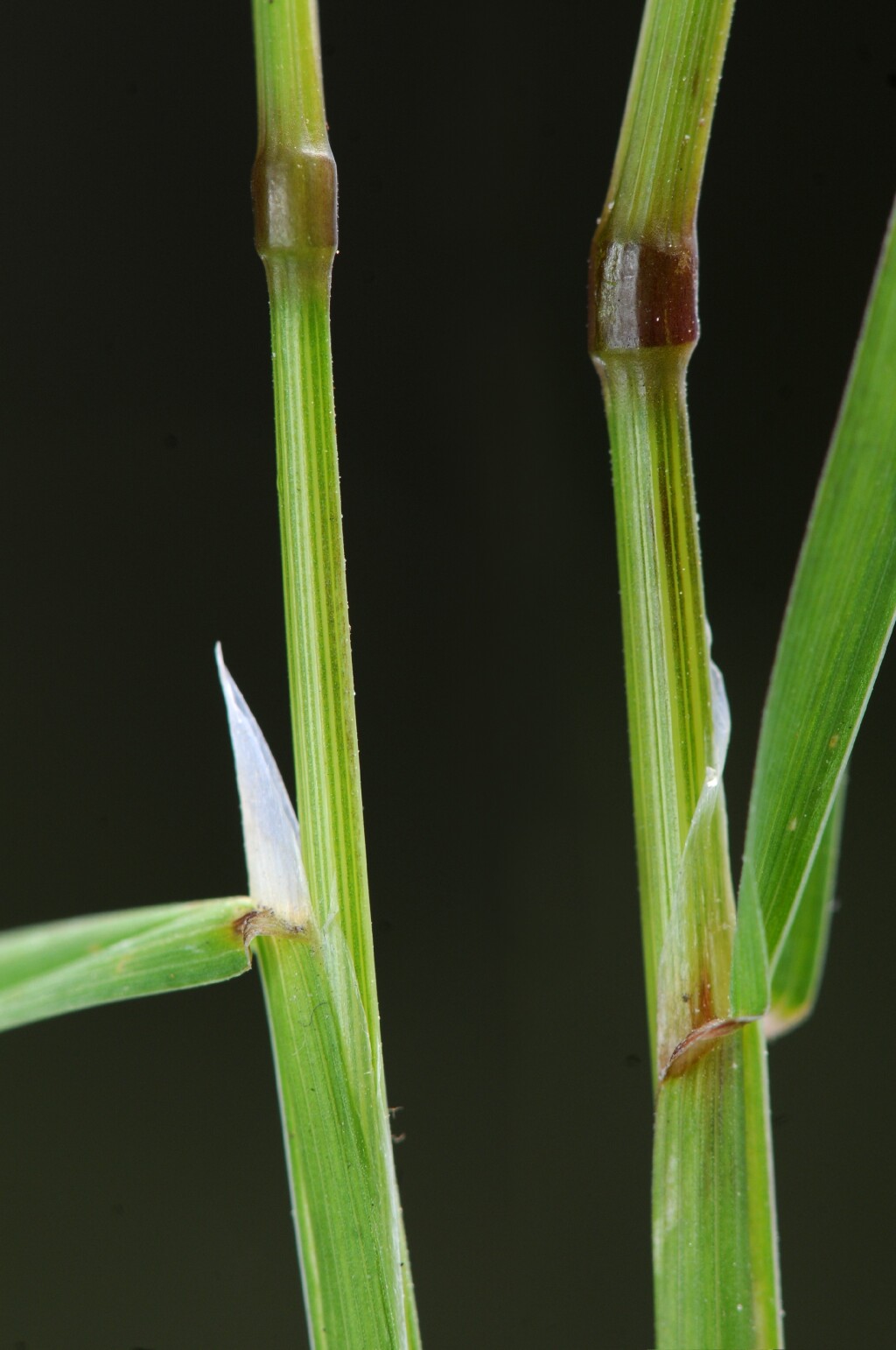Poa trivialis
L. Rough Meadow-grassTufted or stoloniferous perennial, upper nodes conspicuous, usually yellowish, culms ascending to erect, to 1 m high. Leaves glabrous, usually scabrous; sheath commonly purplish; blade flat, to 20 cm long and 6 mm wide, abruptly tapered and boat-shaped at apex; ligule acute or pointed-obtuse, 1–3 mm long. Inflorescence an oblong to narrowly ovoid panicle, to 20 cm long and 8 cm wide, the branches tardily or not spreading. Spikelets mostly 2(–3)-flowered, 2.5-4 mm long; glumes subequal, finely pointed, 2–3.5 mm long, the lower 1-nerved, the upper 3-nerved; lemma acutely pointed, 5-nerved, 2.5–3.5 mm long, hairy along the keel and margins in the lower part, occasionally the median nerves also hairy, otherwise glabrous; web copious with hairs c. 2 mm long or more. Flowers Sep.–Jan.
VVP, GipP, OtP, WaP, Gold, CVU, GGr, NIS, EGL, HSF, HNF, OtR, Strz, MonT. Also naturalised NSW, ACT, Tas. Occasional in cooler districts of Victoria (e.g. Portland, Ballarat, Alexandra, Yellingbo, Philip Is., Warragul, Maffra, Bairnsdale, Orbost, Corryong).
Formerly considered to contain 2 subspecies distinguished on the basis of presence or absence of swollen basal internodes (present in Poa trivialis subsp. sylvicola (Guss.) H.Lindb.), but this character appears to be variable, and probably a response to local growing conditions.
Walsh, N.G. (1994). Poaceae. In: Walsh, N.G.; Entwisle, T.J., Flora of Victoria Vol. 2, Ferns and Allied Plants, Conifers and Monocotyledons, pp. 356–627. Inkata Press, Melbourne.
 Spinning
Spinning


